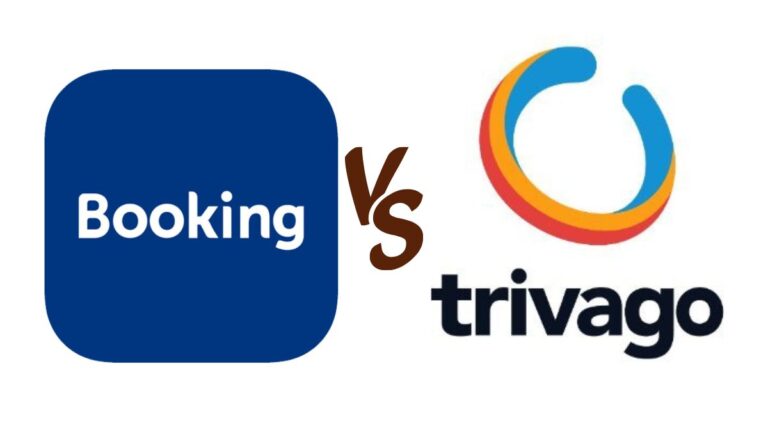Cash or Card: Navigating Currency in New Zealand

As participants in Amazon Associates and other programs, we earn from qualifying purchases. This comes at no additional cost to you. For more details, see our Affiliate Disclosure.
New Zealand is a beautiful country with a lot to offer, from stunning landscapes to vibrant cities. When planning a trip to New Zealand, one important aspect to consider is how to navigate currency and payments. In this article, we will explore the options available for using cash or card in New Zealand, and provide tips and advice to help you make the most of your trip. Whether you prefer the convenience of using a card or the flexibility of carrying cash, we’ve got you covered. Let’s get started!
HIGHLIGHTS
- New Zealand’s shift to cashless transactions is driven by convenience, but cash remains essential for certain locations and situations.
- Cards in New Zealand offer the advantage of wide acceptance and tap-and-go payments, but may come with international transaction fees for tourists.
- Mobile payment systems, such as Apple Pay and Google Pay, are gaining popularity in New Zealand, reflecting both global trends and local preferences.
- Travelers should be cautious with ATMs, stay updated on exchange rates, and keep multiple payment options on hand for flexibility.
A Brief History of New Zealand Currency
Before the arrival of Europeans, the indigenous Māori people of New Zealand had a trade system based on items like pounamu (greenstone or jade) and huka (flaked stone tools). Their worth was derived from utility, beauty, and the prestige they held within the community.
As European settlers began to establish themselves in the 19th century, a blend of currencies from British, Australian, and Spanish origins began circulating the islands. This mix of coins, combined with the absence of a unified currency system, meant barter trade continued to be a predominant mode of exchange for some time.
As New Zealand moved towards nationhood, the need for a standardized currency became apparent, eventually leading to the establishment of the currency system we recognize today.
The Shift to Cashless Transactions
New Zealand, like many nations around the world, has witnessed a significant shift towards cashless transactions in recent years. This evolution can be attributed to several factors:
Technological Advancements: With the proliferation of smartphones and the internet, digital wallets and online banking have become easily accessible. Apps like Apple Pay and Google Wallet have made contactless payments a breeze, while online shopping has further boosted the use of digital transactions.
Convenience: Carrying physical cash requires one to keep change, visit ATMs, and ensure the safety of the money. On the other hand, cards, especially contactless ones, offer a seamless experience for both small and large transactions.
Safety and Security: Digital transactions often provide an added layer of security. With encryption, two-factor authentication, and instant notifications, users can immediately detect and report any unauthorized activity.
Incentives from Banks: Many New Zealand banks offer incentives for using cards over cash. These can be in the form of reward points, cashbacks, or discounts, encouraging customers to make the switch.
Environmental Concerns: The production of paper and coin currency has an environmental cost. By reducing the need for physical currency, the strain on resources is minimized.
Retailer Preferences: With the efficiency and ease of digital transactions, many retailers now prefer card payments, with some even going entirely cashless.
Despite the rise of cashless methods, it’s essential to note that cash hasn’t disappeared entirely. Especially in remote areas and for specific services, cash can still be king. However, the overall trend in New Zealand, driven by both consumer preference and technological innovation, is decidedly moving towards a more digital, cashless economy.
Popular Banking Options for Tourists
Navigating the financial landscape in a foreign country can be daunting. For tourists visiting New Zealand, understanding the banking options can greatly enhance the travel experience. Here are some of the most popular banking choices:
- International Debit and Credit Cards: Most international cards, especially those affiliated with Visa, MasterCard, or American Express, are widely accepted in New Zealand. Tourists should, however, check with their banks regarding international transaction fees and alert them about overseas travels to avoid any blockages.
- Travel Money Cards: These are prepaid cards that allow tourists to load multiple currencies. They offer the advantage of locking in exchange rates before travel, providing a safeguard against currency fluctuations.
- ATMs: New Zealand has a vast network of ATMs, especially in urban centers. Tourists using foreign cards should be aware of potential transaction fees and conversion charges.
- Currency Exchange Services: Numerous currency exchange counters are available at airports, city centers, and malls. It’s advisable to compare rates as they can vary between providers.
- Mobile Banking and Payment Apps: Apps like Apple Pay, Google Pay, and Samsung Pay are increasingly accepted in New Zealand. Some local apps, such as ANZ GoMoney, might be useful for tourists planning a longer stay.
- Local Bank Accounts: For those staying for an extended period or working in New Zealand, opening a local bank account can be a viable option. Major banks like ANZ, BNZ, Westpac, and Kiwibank offer services tailored to travelers and temporary residents.
- Traveler’s Cheques: While they’ve become less common due to more convenient digital options, some places still accept traveler’s cheques. However, it’s essential to know where they can be cashed, as not every institution or retailer will accept them.
By understanding these options, tourists can ensure a seamless financial experience while enjoying everything New Zealand has to offer. Always remember to consider security, convenience, and potential fees when choosing a banking solution.
Pros and Cons: Using Cash in New Zealand
Using cash as a mode of payment while traveling has its unique benefits and challenges. In New Zealand, where both digital and cash transactions are common, understanding the pros and cons of using cash can be beneficial for tourists.
Pros:
- Universal Acceptance: Regardless of where you are in New Zealand, cash is accepted. This is especially handy in remote areas where digital payment systems might not be prevalent.
- No Transaction Fees: Unlike using international credit or debit cards, with cash, you don’t have to worry about transaction fees or foreign currency conversion fees.
- Budgeting: Handling physical money can make it easier for some travelers to track and manage their daily expenses, ensuring they stick to a set budget.
- Immediate Payment: There’s no waiting for card approvals or dealing with declined transactions when you pay with cash. It’s straightforward and efficient.
- Privacy: Cash transactions leave no digital trail, ensuring complete privacy in your purchases.
Cons:
- Safety Concerns: Carrying large amounts of cash can pose a security risk. Loss or theft of money can put a damper on your travel plans.
- Inconvenience: Withdrawing cash frequently, especially from ATMs that aren’t affiliated with your home bank, can lead to additional charges. There’s also the challenge of ensuring you have the right denominations for various expenses.
- Currency Exchange Rates: If you’re exchanging your home currency for New Zealand dollars, the rates can fluctuate, and service fees can add up.
- Limited Cash-Only Establishments: While cash is universally accepted, some modern establishments or services, especially in urban areas, might prefer card payments or even be entirely cashless.
- Lack of Rewards: Unlike credit cards, which often offer points, cashbacks, or other rewards, cash transactions don’t provide any additional benefits.
Weighing these pros and cons will allow tourists to decide the balance of cash they want to carry versus relying on other payment methods during their New Zealand adventure.
Pros and Cons: Relying on Cards
The convenience of cards has made them a primary choice for many travelers. In New Zealand, where card transactions are commonplace, it’s valuable for tourists to weigh the benefits and drawbacks of relying predominantly on card payments.
Pros:
- Convenience: Cards eliminate the need to carry a lot of cash or search for ATMs regularly. Simply swipe, dip, or tap to pay.
- Security: If a card is lost or stolen, it can be quickly blocked to prevent unauthorized use. Most banks also offer protection against fraudulent transactions.
- Trackability: Using a card provides a clear record of all transactions, making it easier to manage and review expenses.
- Rewards and Perks: Many credit cards offer rewards, cashback, or other benefits for every transaction made, which can lead to savings or other advantages in the long run.
- Foreign Currency Conversion: Modern cards automatically handle currency conversions, often offering competitive exchange rates compared to physical currency exchanges.
Cons:
- Fees: Some cards may have foreign transaction fees that can add up over time. It’s essential to be aware of any charges associated with international use.
- Limited Acceptance in Remote Areas: While cards are widely accepted in urban centers and tourist spots, more remote areas in New Zealand might still operate on a predominantly cash basis.
- Technical Glitches: There can be occasional issues with card machines, network errors, or even compatibility problems with foreign cards.
- Risk of Overspending: With the ease of card transactions, tourists might find it easier to lose track of their spending, potentially exceeding their budget.
- Card Blockages: Sometimes, banks might block cards due to suspicious overseas activity. While this is a security measure, it can be inconvenient if travelers don’t inform their banks of their travel plans in advance.
Considering these pros and cons can help tourists decide how much they want to rely on cards versus other payment methods. A balanced approach, combining the convenience of cards with the universality of cash, often works best for many travelers in New Zealand.
Mobile Payment Systems: A Rising Trend
The global financial landscape is experiencing a revolution, and at its heart are mobile payment systems. New Zealand, known for its progressive approach to technology, has not been left behind in this trend. The increasing reliance on smartphones and the need for quick, hassle-free transactions have made mobile payments an integral part of the Kiwi consumer experience.
Integration with Everyday Life: Mobile payment systems have woven themselves into the fabric of everyday transactions in New Zealand. Whether it’s buying a cup of coffee, paying for parking, or shopping online, the convenience of paying with just a tap or scan of a phone is unparalleled.
Leading the Charge: Platforms such as Apple Pay, Google Pay, and Samsung Pay have made significant inroads into the New Zealand market. However, local solutions, such as ASB’s PayTag and Westpac’s Hotspot, have also gained traction, offering a range of services tailored to the Kiwi lifestyle.
Security Matters: One of the advantages of mobile payment systems is the layer of security they provide. Features like biometric authentication, encryption, and tokenization ensure that the user’s financial details remain secure, instilling confidence in these digital transaction methods.
The Environmental Angle: Beyond convenience and security, there’s an environmental benefit. Digital transactions reduce the need for printed receipts and the production of physical currency, contributing to a reduction in environmental impact.
Challenges Ahead: However, the rise of mobile payment systems is not without challenges. There remains a section of the population wary of this technology, either due to concerns about security or a lack of tech-savviness. Furthermore, in remote parts of the country, internet connectivity can be inconsistent, making mobile transactions challenging.
Despite these hurdles, the trajectory for mobile payment systems in New Zealand points upward. As technology continues to advance and integrate deeper into daily life, it’s likely that the reliance on these digital wallet systems will only grow, marking a new chapter in the country’s financial story.
ATMs and Exchange Rates: What You Need to Know
Traveling to New Zealand, or any foreign country for that matter, brings with it the need to access local currency. ATMs and understanding exchange rates play a pivotal role in this aspect, ensuring you get the most value out of your money while avoiding any unnecessary hassles.
ATM Accessibility: New Zealand boasts a wide network of ATMs, particularly in urban and tourist-heavy areas. Major banks such as ANZ, BNZ, Westpac, and Kiwibank have machines located conveniently throughout cities, towns, and even in some remote areas.
Using International Cards: Most ATMs in New Zealand accept international debit and credit cards, especially those with Visa or MasterCard logos. Before traveling, it’s a good idea to notify your home bank of your travel dates to prevent potential security blocks on your card.
Fees and Charges: While accessing your money is generally easy, it’s essential to be aware of potential fees. Many banks charge an international withdrawal fee, and there may also be conversion charges. It’s a good idea to withdraw larger amounts less frequently to minimize these fees, but balance this with the safety of not carrying too much cash.
Exchange Rates: Currency exchange rates can fluctuate daily. While ATMs often offer competitive rates, they may not always be the best. It’s worth checking a reliable financial news source or using currency conversion apps to keep abreast of current rates. This knowledge will help you make informed decisions about when and how much money to withdraw.
Dynamic Currency Conversion (DCC): Some ATMs or card terminals at retailers might offer a service called Dynamic Currency Conversion. This means you can choose to see and be charged in your home currency instead of NZD. While it might seem convenient to see the amount in a familiar currency, the exchange rate used for DCC can often be less favorable than the standard rate your bank would offer. It’s usually recommended to decline DCC and be charged in NZD.
Safety Precautions: Like anywhere in the world, it’s essential to exercise caution when using ATMs. Use machines in well-lit, busy areas, shield your PIN, and be wary of any devices or individuals that seem suspicious.
Equipped with this knowledge, tourists can navigate New Zealand’s financial landscape more confidently, ensuring a smoother and more enjoyable travel experience.
Understanding the Kiwi Way: Local Payment Preferences
New Zealand, often affectionately known as the land of the “Kiwis”, has its distinct approach to many things, including how transactions are done. Delve into the world of local payment preferences to truly understand the Kiwi way.
Historically, New Zealanders have been quick to adopt new technologies, and this is evident in their payment habits. Electronic and card payments have become an integral part of daily life, with EFTPOS (Electronic Funds Transfer at Point Of Sale) being a staple at almost every retail outlet.
Cash, while still in use, has seen a decline in popularity, especially among younger generations. Many Kiwis find the convenience of tap-and-go payments hard to beat, relegating cash to an occasional necessity rather than the primary mode of payment.
Mobile payment solutions are on the rise. Services like Apple Pay and Google Pay have gained traction, but local banking apps also offer mobile payment capabilities, reflecting the Kiwi penchant for blending global trends with local flavors.
One thing tourists might find unique is the Kiwi preference for direct bank transfers, even for minor transactions. It’s not unusual for friends to immediately transfer their share of a dinner bill or for small businesses to prefer bank transfers over card payments.
Lastly, it’s worth noting the shift towards sustainability in New Zealand. Eco-friendly initiatives are widely embraced, and this extends to payments. Digital receipts, paperless transactions, and the decline of coin usage are all in line with the Kiwi commitment to environmental responsibility.
To sum it up, the Kiwi approach to payments is a blend of convenience, innovation, and sustainability. Understanding these preferences can provide a smoother, more local experience for those exploring the beautiful shores of New Zealand.
Essential Tips for a Hassle-free Financial Experience
Navigating the financial intricacies of a new place can be daunting, whether you’re traveling or settling down. Yet, a seamless monetary experience can significantly enhance your journey, ensuring you focus on the adventure rather than monetary mishaps. To guide you, here are some essential tips:
- Stay Informed: Keeping tabs on current exchange rates can save you from overspending. Real-time currency conversion apps can be invaluable tools.
- Notify Your Bank: Informing your bank about your travels can prevent unintentional card blocks due to perceived suspicious overseas activity.
- Keep Multiple Payment Options: Don’t rely solely on one form of payment. A mix of cash, cards, and mobile payments can offer flexibility and security.
- Understand Local Preferences: Every place has its favored payment methods. Familiarizing with these can help in smoother transactions.
- Avoid Public Wi-Fi for Transactions: Public networks are often less secure. For your financial safety, avoid making transactions over these networks.
- Set a Budget: Monitoring daily or weekly spending can ensure you stay within limits and avoid unexpected shortfalls.
- Keep Emergency Contacts: Having your bank’s or card provider’s contact details can be a lifesaver during emergencies like lost cards.
- Review Statements Regularly: Periodically checking statements can help spot and rectify any unauthorized transactions swiftly.
- Be Cautious with ATMs: Opt for ATMs in secure, well-lit areas and always be vigilant for any signs of tampering.
- Stay Updated on Fees: Awareness of any associated transaction or withdrawal fees ensures you aren’t caught off-guard by unexpected charges.
- Keep Some Local Currency: Immediate expenses upon arrival, like transportation, are easier handled with local currency in hand.
With these tips at your disposal, you’re well-equipped to handle the financial challenges that might come your way, ensuring a hassle-free experience in any destination.






